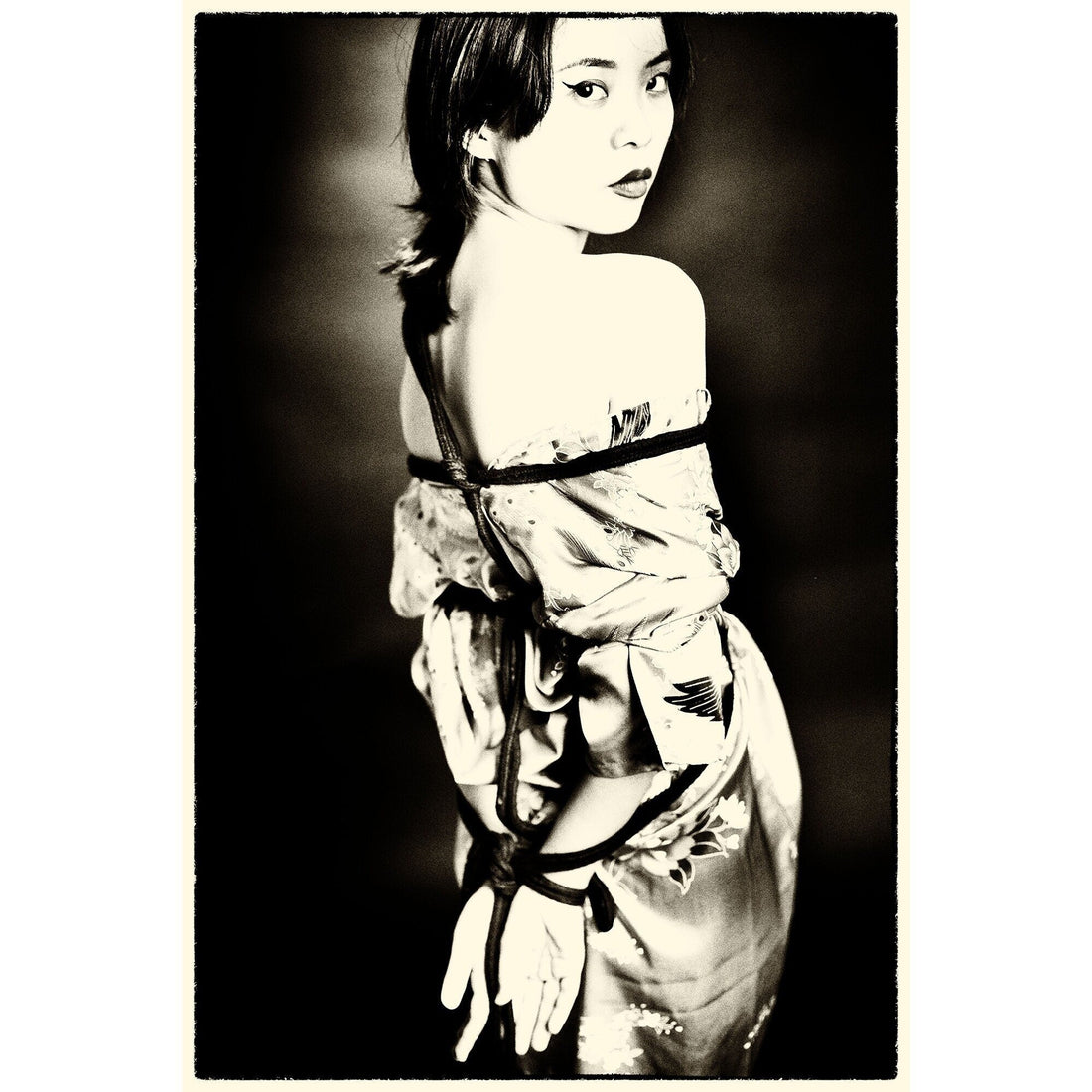
What is Shibari
Share
What is Shibari? An Introduction to Rope Bondage Art
Shibari is one of my favourite subjects for photography, and features a lot in my portfolio, but for those unfamiliar with it Shibari, is often referred to as Japanese rope bondage, is an intricate and visually striking art form that has captivated photographers and artists alike. For photographers, Shibari art photography presents a unique opportunity to capture the interplay of tension, vulnerability, and elegance through carefully constructed patterns and ties. It transforms the human body into a living canvas, highlighting the balance between restraint and freedom.
The Origins of Shibari Rooted in history, Shibari evolved from hojojutsu, a martial art practiced by samurai to restrain prisoners. Over time, it transformed into kinbaku, which emphasized beauty and eroticism. Today, Shibari is celebrated as a performance art and an essential subject for fine art photography that explores texture, emotion, and intimacy.
Shibari as an Art Form In contemporary settings, Shibari photography blends visual storytelling with sculptural aesthetics. The knots and lines created by the ropes guide the viewer’s eye and frame the model’s body, allowing photographers to emphasize form, texture, and emotion. Black and white photography is particularly effective in highlighting contrasts, shadows, and patterns, making it a popular choice for showcasing Shibari rope bondage. The absence of color accentuates the interplay between light and dark, drawing attention to the intricate details of the knots and the texture of the rope against the skin. This monochromatic approach enhances the emotional depth of the image, creating a timeless, dramatic effect that emphasizes both the tension and elegance inherent in Shibari.
Shibari Through a Photographer’s Lens For photographers, Shibari art photography is more than documenting ties—it’s about crafting visual narratives. Shibari is a form of bondage and, as such, carries a certain taboo, which adds to its intrigue. Beyond the aesthetic appeal, the experience for the model is deeply emotional, as they relinquish control to the rigger. For some, this act serves as a profound release, while others find comfort and security in the sensation of being embraced by the ropes. The juxtaposition of softness and tension evokes raw emotion, creating compositions that are both provocative and elegant. Photographers often use dramatic lighting to accentuate the patterns and textures of the ropes, adding layers of depth and dimension.
Key reasons photographers are drawn to Shibari art photography:
-
Visual Impact - The geometric patterns and symmetry of the ties are visually striking.
-
Emotional Storytelling - The connection between the rigger (the one tying) and the model (the one being tied) can convey vulnerability, strength, and trust.
-
Artistic Freedom - Shibari allows for endless creative experimentation with a
Safety, Trust, and Consent in Shibari Shoots Photographing Shibari rope bondage requires careful preparation and respect for boundaries. Establishing trust and clear communication with models is essential. Photographers must discuss consent, safe words, and aftercare before any session. Ethical practices not only ensure safety but also create an environment where models can fully embrace the art.
Shibari’s Modern Appeal in Photography
Timeless Aesthetics - The intricate knots and poses resonate as both traditional and contemporary.
Versatility - From fine art photography to erotic photography, Shibari adapts to various themes and styles.
Emotional Depth - The visual tension of ropes amplifies human emotion, making each image deeply personal and impactful.
Conclusion For photographers, Shibari art photography is a celebration of form, connection, and emotion. It invites exploration into the complexities of vulnerability and power, offering endless opportunities for creativity. Whether you’re an experienced artist or a newcomer to Shibari photography, this art form provides a powerful medium for storytelling and visual expression. In the next post, we’ll delve deeper into the history of Shibari, tracing its journey from ancient martial arts to modern photography studios.